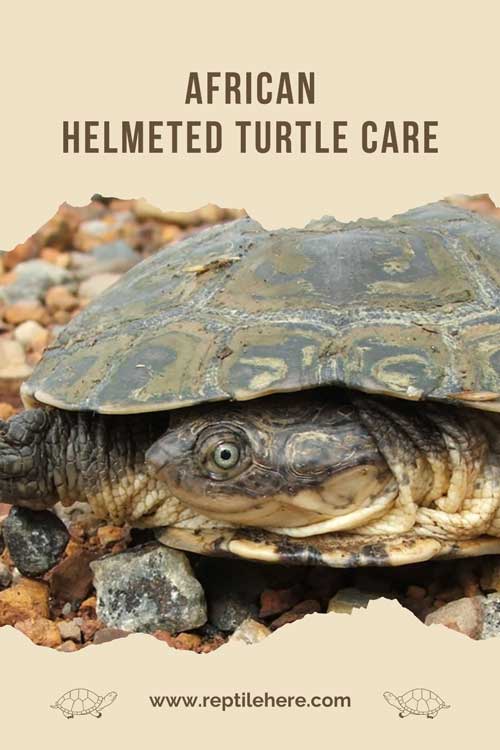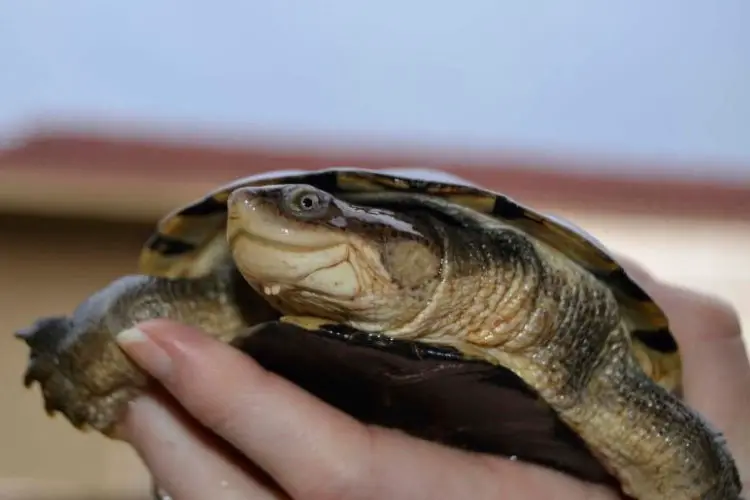African Helmeted Turtle Care – The Ultimate Guide
The African helmeted turtle is a semi-aquatic unique breed of turtle that is majorly found in Africa, just as the name posits. You’d find this animal in some African countries like Ghana, Yemen, Sudan, Madagascar and Cape Town.
This beautiful turtle is found in deep water bodies of both fresh and stagnant water (like lakes, rivers, dams, and marshes). They’re small-sized turtles and often a preferred choice for pet lovers.
Scientifically it is known as Pelomedusa subrufa and has other common names like the African Side-necked turtle, the Marsh terrapin, or the crocodile turtle. If you want to learn how to care for your turtle, this article will serve as the African helmeted turtle care guide for you.
Basic Information About The African Helmeted Turtle
Contents
| Scientific Name | Pelomedusa Subrufa |
| Common Name | African helmeted turtle, African side-neck turtle or African side-necked turtle, Crocodile turtle. |
| Adult Size | Between 18cm to 30cm (7 to 12 inches) |
| Max Size | 32.5cm (12.8 inches) |
| Lifespan | 25 to 50 years or more. |
| Diet | They’re omnivorous. |
| Range | Comprises about 10 different species that are distributed across Africa, Madagascar and the Arabian Peninsula. |
| Behaviour | They’re a very friendly species of turtle and are great for pets. Very curious animals and sometimes aggressive towards one another when they’re eating. Dirtiness repels them, hence they’re kept in a neat and fresh environment often. |
| Clutch Size | Between 7 to 17 eggs. |
| Legal to Keep in the USA | Not allowed as pets in all US states. |
| Extinction Status | Not extinct or endangered species. |
Are African Helmeted Turtles Easy To Take Care Of?
Care of African helmeted turtles can be complex sometimes. They require a little high level of care and attention. But can still be conveniently taken care of by beginners who are fully ready to work hard.
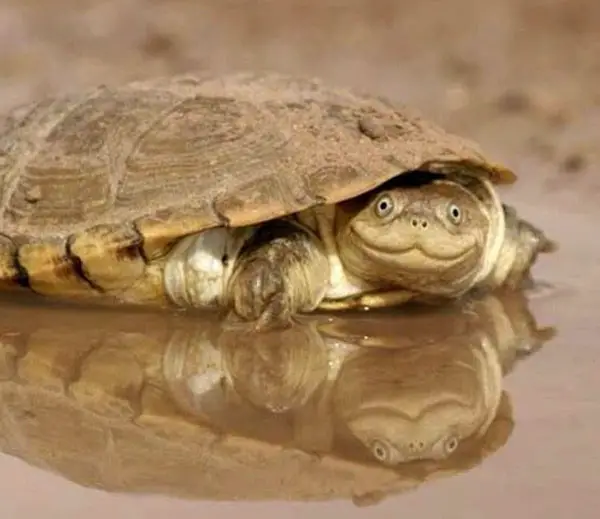
How To Take Care Of African Helmeted Turtle
Caring for the African helmeted turtle demands utmost care and requires placing them in a very conducive environment and under good environmental conditions. Hence let’s consider the African helmeted turtle care sheet.
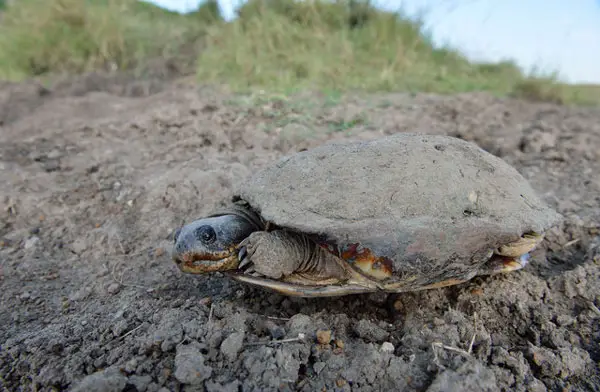
For Shelter
A well-enclosed tank without any iota of a leak is required. A very deep and wide tank of about 300 mm and 1,100 mm or more is needed to achieve a well-submerged domain. This depth and width are expected because they love to swim, hence it’s imperative to provide them with sufficient space to swim and thrive.
The tank should have a nice filtration system because without this you’d have to change the water often. A good canister filter will be the best option for a massive tank. However, if you don’t have one, the water should be changed at least once a week to ensure neat and fresh water.
Also, ensure adequate water care. Keep it warm and clean regularly. Water heaters are a good way to maintain warm water. Treat your water before introducing it to the tank, to cleanse it from every bit of chlorine.
For Temperature
Have a regular temperature of about 70°-80°F or 25°C to keep these turtles warm and comfortable. Hatchlings are placed in a water temperature of about 90°F or 27°C. Water heaters can help you maintain a comfortable temperature and two may be required for massive tanks.
For Lighting Needs
They’re provided with UV light of 75 watts at the hatchling stage and full-grown African helmeted turtles are kept under lighting of about 100 to 150 watts. In all ensure to provide them with a maximum of 10 to 13 hours of constant light. You can put off the light at night to give them that normal feeling of day and night.
For Basking Arena
The African helmeted turtle needs basking areas where they come to rest and feel some kind of warmth. Make sure the height is the same as the water level so that they can bask without fear of drowning. These areas should be provided with a good basking light system (a UVB bulb) capable of emitting rays that’ll also provide them with vitamin D3 for strong bone formation. Replace the bulb every 7 to 9 months.
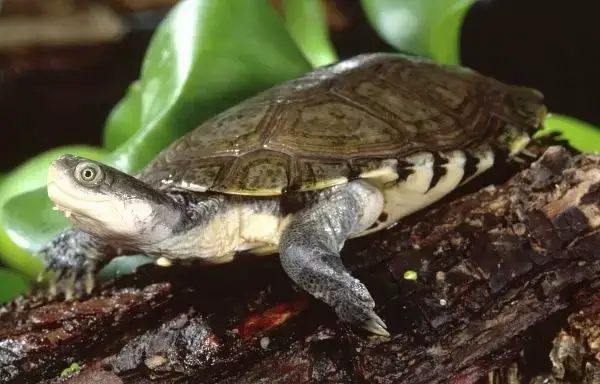
Also, basking arena temperatures should be different from the general environment, a temperature of about 90° to 95°F (32°to 35°C) is most suitable for this area. Provide them with docks and ramps for easy climbing.
For Dieting Needs
The African helmeted turtle is an omnivorous animal, feeding on both plants and animal food. The major part of their feeding needs comes from the protein class of the food. For meat protein needs they get them from eating snails, fish, shrimp, salmon, insects, earthworms, locusts, cricket, crustaceans, mice, and chicks.
You can as well feed them green vegetables like kale, spinach, lettuce and other mixed vegetables. Dandelions and collards are also very nourishing foods for your turtle. Dry foods like mature and reptomin pellets are good foods for aquatic turtles that provide them with calcium and vitamins.
Common Diseases Of The African Helmeted Turtle And How To Care For A Sick Turtle
- Deficiency of vitamin A
- Abscesses
- Infections on the shell can be parasitic, bacterial or fungal.
- Turtle respiratory infections
- Gastrointestinal parasite infections
- Shell fractures.
Common Signs Of These Diseases
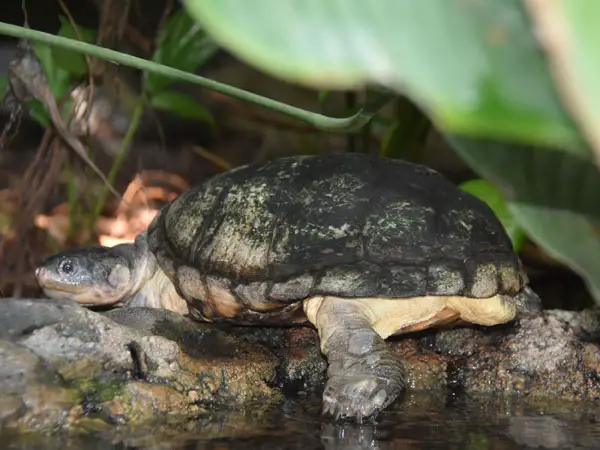
For Vitamin A deficiency (hypovitaminosis)
- Change in the epidermis (outer skin layer).
- No appetite
- Lethargy or Sluggishness
- Swollen eyelids
- Ear abscess, leading to a swollen ear
- Respiratory infection
- Kidney failure
For Abscess
- Tumour- like swelling filled with pus on different parts (especially on ears, head and side of the eyes) of the body.
For Gastrointestinal infections
- Diarrhoea
- Weight loss
How To Care For Sick Turtle
For a vitamin A-deficient turtle, this happens as a result of poor dieting. When you feed them a particular type of food for long (for example, only meat) or a low-quality commercial food then this vitamin deficiency will likely occur.
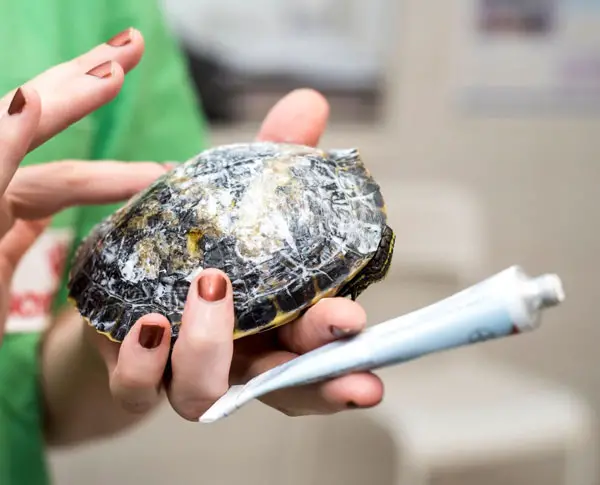
First, to care for the sick turtle, separate the sick turtle from the others and prepare a separate tank with a good heating and lighting system. Make sure it’s warmer than the former tank where you’re transferring it from. Add some multivitamin blocks inside the water, turtles love them a lot and they’ll help restore every deficient vitamin. You can purchase these turtle snack blocks from stores. Gradually introduce a variety of food to the sick turtle.
Respiratory disease infection is caused by extreme weather conditions and is often prevalent in winter seasons. Cold water temperatures and poor water quality are the major causative factors of this respiratory disease. You’ll notice a runny nose, basking too much, pneumonia and others.
The first step to take in handling this condition is to provide a sufficient heating system. If your turtles are outside you may consider bringing them indoors to feel some warmth. You can also visit a veterinary doctor to take a look at them, although baby turtles are a bit difficult to handle because of their fragility.
Can You Keep The African Helmeted Turtle As A Pet?
Yes, you can own the African helmeted turtle as pets. A lot of people prefer to own this type of turtle as a pet rather than other turtles. Because it’s beautiful to behold how they tuck in their necks by the side of their shell.
What Does An African Helmeted Turtle Need In A Tank
First, the aquarium of an African helmeted turtle should be nothing less than 75 gallons full of water and provide them with a portion of dry land. Include pebbles, big rocks, floating docks and sand in your tank to provide that natural habitat feeling for them. Also, African helmeted turtle needs basking arenas in your tank as well for them to slide in whenever they want to bask.
Behavioural Features Of the African Helmeted Turtle
The male turtle has a long and thick tail, while the female turtle is identified by their short tail and wider carapace. The carapace is either black or brown, greyish with a brown tail and limb, with a yellow-coloured underside.
One of its names, the African side-necked turtle emanated because of their inability to properly tuck in its long neck and head into its shell. Rather they tuck them in by the side.
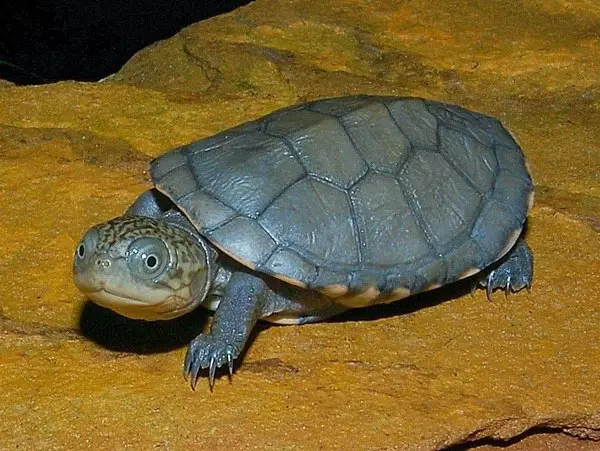
Their distinct cervical spine differentiates their body structure from other turtles. The rate of aggressiveness between two or more turtles makes it difficult to dwell in the same habitat. Therefore they’re kept separately, especially full grown African helmeted turtles.
Predation By African Helmeted Turtle
African helmeted turtle that lives in a natural habitat hunt for their food or prey. Most times they work together whenever there’s a need to catch large prey. Preys like birds may need more than one turtle to capture. These birds feed on
turtle hatchlings and eggs.
Weight Of African Helmeted Turtle
The weight of the male and female African helmeted turtles differ. The male weighs higher than the female and it’s visibly larger than the female. The males weigh about 3kg and with a carapace length of about 315 mm to 325 mm. While the female turtle weighs about 2.2kg and has a carapace length of 290 mm. The hatchlings are about 4 to 10 g with a carapace length of about 25 to 35 mm.
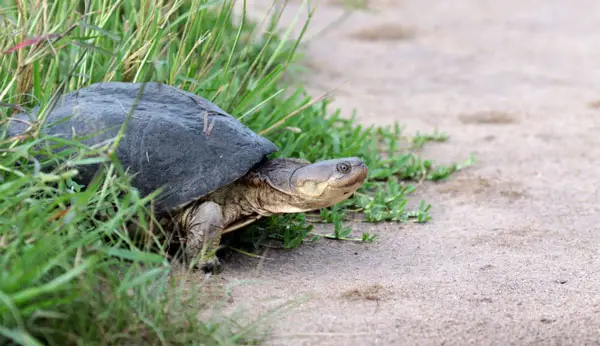
Cost Of The African Helmeted Turtle
Young African helmeted turtles cost between $50 to $100, depending on the size. Look out for a healthy turtle before purchasing and avoid anyone with some signs of sickness.
Final Words
The African helmeted turtle is a shy but curious specie of turtle. It has a long lifespan and feeds on both plant and animal foods which makes it an omnivorous animal. The African helmeted turtle care is a moderate one.
Hopefully, by now I believe that we’ve been able to show ways you can take care of African helmeted turtles.
